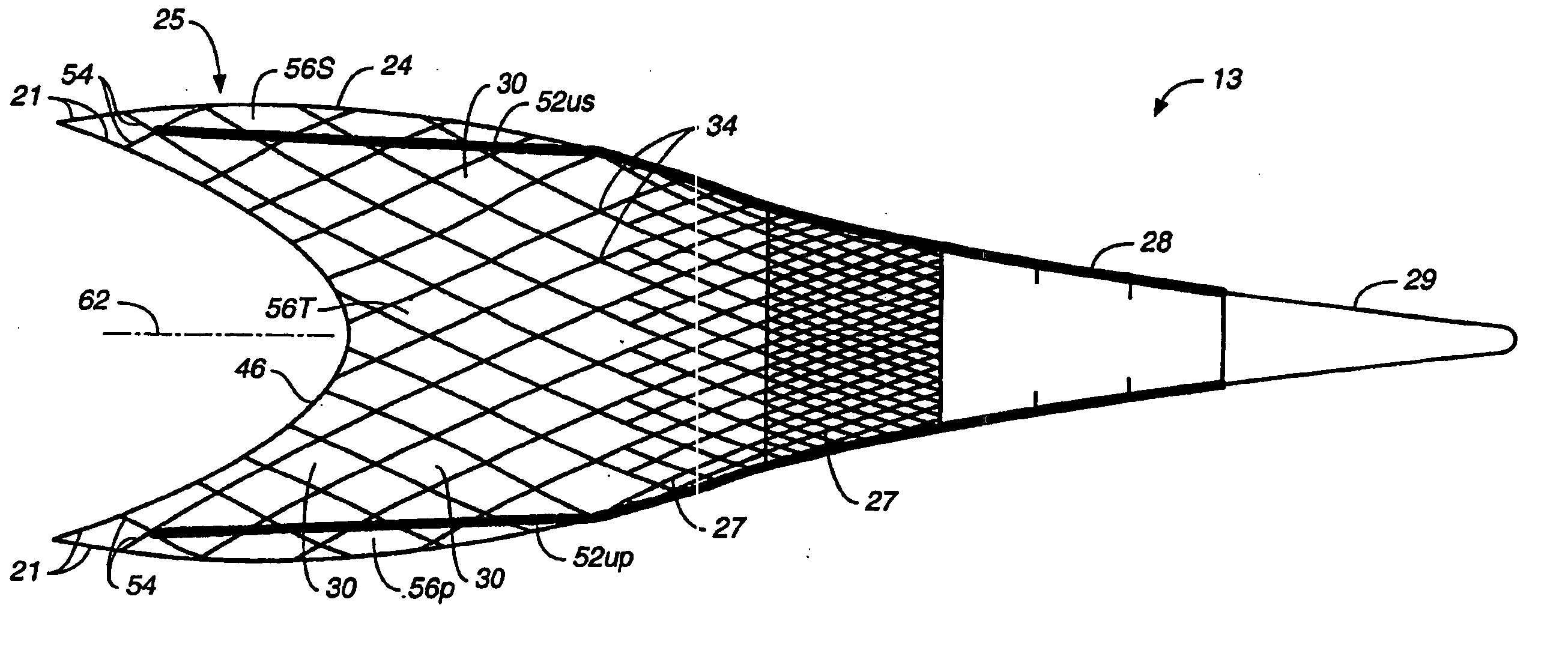Self-spreading trawls having a high aspect ratio mouth opening
a self-spreading, trawl technology, applied in the field of trawls, can solve the problems of untargeted species being caught in conventional mid-water trawls, untargeted species being caught intermingled with one or more untargeted species, etc., and achieve the effect of reducing bycatch
- Summary
- Abstract
- Description
- Claims
- Application Information
AI Technical Summary
Benefits of technology
Problems solved by technology
Method used
Image
Examples
embodiment
Spread Zone Embodiment
[0114] As shown in FIGS. 7, 8 and 9, the side-panels 56S, 56P of the trawls 13 built in accordance with the present invention include a mesh area that extends forward (i.e. away from the back-end 28 and nearer the vessel 10) further than corresponding mesh areas in the top panel 56T and / or bottom panel 56B. That is, the designed center of the breastlines 42, or an equivalent of the designed center of the breastlines 42, preferably projects at least one (1) full mesh length ahead of the designed center of the of the footrope 44 and / or the headrope 46. In FIGS. 7, 8 and 9, a dashed line 112 indicates the location in the side-panels 56S, 56P which has mesh cells 30 spanning completely across the side-panels 56S, 56P between the upper riblines 52up and 52us and the lower riblines 521p and 521s. The dashed line 112 is ahead of, i.e. nearer the vessel 10 than, the location in the top panel 56T and the bottom panel 56B which has mesh cells 30 spanning completely betwe...
PUM
 Login to View More
Login to View More Abstract
Description
Claims
Application Information
 Login to View More
Login to View More - R&D
- Intellectual Property
- Life Sciences
- Materials
- Tech Scout
- Unparalleled Data Quality
- Higher Quality Content
- 60% Fewer Hallucinations
Browse by: Latest US Patents, China's latest patents, Technical Efficacy Thesaurus, Application Domain, Technology Topic, Popular Technical Reports.
© 2025 PatSnap. All rights reserved.Legal|Privacy policy|Modern Slavery Act Transparency Statement|Sitemap|About US| Contact US: help@patsnap.com



